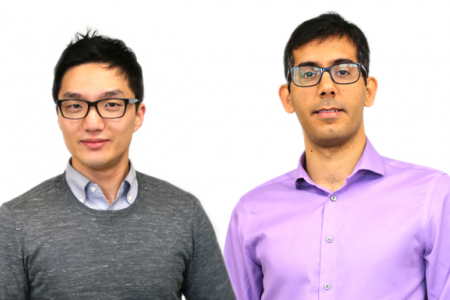Designing an Energy-Efficient Cement
 March 15, 2017 - Two engineering assistant professors think they’ve found a way to manipulate the most commonly used building material in the world – cement – to make it less of an energy drain while not compromising its superior strength.
March 15, 2017 - Two engineering assistant professors think they’ve found a way to manipulate the most commonly used building material in the world – cement – to make it less of an energy drain while not compromising its superior strength.
According to the U.S. Energy Information Administration, space heating and cooling accounts for more than 50 percent of energy consumption in buildings. A staggering amount of energy seeps out through walls, windows and doors. “It’s imperative that we design buildings with low thermal conductivity so we don’t waste energy,” said Mohammad Javad Abdolhosseini Qomi, a computational materials scientist in the Department of Civil and Environmental Engineering.
Qomi paired up with Jaeho Lee, an expert in heat transport in the Department of Mechanical and Aerospace Engineering, to address one of the major challenges in science. “How do we produce a material with really low thermal conductivity but high mechanical properties of strength and stiffness? This is a difficult problem because they are opposites,” says Qomi.
Their findings are published in the January 2017 issue of Applied Physics Letters. Examining the chemistry and physics of calcium-silicate-hydrates (CSH), the glue of cement, at the nanoscale allowed the engineers to put their heads together. With computer simulations, they found that by adding a nanoparticle with a mismatched vibrational mode, they could change how heat moved through the material, coming up with a new recipe for cement that would be strong, yet block heat from escaping.
According to Lee, there was not much work involved in applying the concepts of nanoscale thermal transport, with which he was more familiar, to the cement materials, which were Qomi’s expertise. “We knew we could make an immediate contribution to the scientific community. I was more interested in theoretical mechanisms of thermal transport, and Qomi was more interested in computational aspects of heat transport at the nanoscale, and it naturally led to a nice collaboration.”
Qomi says that the fact the two came at the problem from dissimilar perspectives helped. “This was the outcome of two young scientists sitting across from each other and looking at the problem in different ways,” says Qomi. “Radical innovations occur at the intersection of these areas.”
“Our collaboration provided a multifaceted perspective, proving that we can solve challenging problems through synergistic efforts that combine computational, theoretical and experimental techniques,” says Lee.
The next step for the scientists is to validate their computer simulations in the lab.
- Lori Brandt
